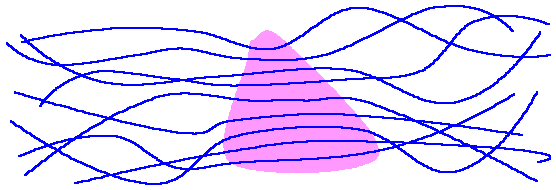which have lined up and crystallised in the pink region.

gcsescience.com 60 gcsescience.com
The
Structure of Polymers.
Thermosoftening Polymers and Crystallinity.
Polymers may be classified as thermosoftening or thermosetting.
Thermosoftening polymers are sometimes
called thermoplastic.
Thermosoftening polymers include poly(ethene), poly(propene),
poly(styrene) and poly vinyl chloride.
What is the Structure of a Thermosoftening Polymer?
A polymer
molecule is a long chain of
carbon atoms
which are held together by strong covalent bonds.
The forces in between the
molecules
are relatively weak but
sections of the chains can sometimes line up side by side to
form tiny crystals. These crystals form links between the chains,
hold the structure together and make the polymer solid.
What is the Crystallinity of a Polymer?
The amount of the polymer
that forms crystals is called its
crystallinity.
The higher the cystallinity
of the polymer, the stronger
and stiffer
the material becomes and the
melting
point gets higher
(see HDPE
and LDPE).
The melting point of the polymer
depends
on the strength of the
forces
of attraction between the molecules
(the melting point of the
crystals).
When the polymer is heated the
crystals will melt, the material
will become very soft and
can flow slowly like a thick
liquid.
In this state the polymer can fill a
mould and be cast into a shape.
When the polymer cools down,
new crystals can form between
the chains
and the new shape is fixed. The same polymer can be
reheated and remoulded. Such polymers are called thermosoftening
(meaning that they go soft when you
heat them).
The picture below shows the
tangled polymer
chains
which have lined up and crystallised
in the pink region.

Some polymers do not form
crystals. They soften
when heated and harden
when cooled down again.
When cold, they are not crystalline but glassy.
These polymers are also called
thermosoftening.
![]() Links Polymers Revision Questions
Links Polymers Revision Questions ![]()
gcsescience.com The Periodic Table Index Polymers Quiz gcsescience.com
Home GCSE Chemistry GCSE Physics
Copyright © 2015 gcsescience.com. All Rights Reserved.